
An enquiry in early 2011 by a private collector of Czechoslovak RAF memorabilia, to the Mayor of the Town Hall at Prague 6, regarding a possible memorial plaque on the house where S/Ldr František Weber had lived in their district was the instigation for this memorial.
The Mayor, Mrs Marie Kousalíková, welcomed this suggestion as their District of Prague had a long military history and planning for a memorial plaque began. By August, plans for the plaque’s design had been drawn up and the Vojenský Ústřední Archiv [VUA – the Military Archive ] in Prague consulted on detail. The plaque was manufactured in the Autumn of 2011, but because the building itself was still undergoing refurbishment at that time, it was decided that the unveiling ceremony would be postponed until 3 October 2012.
About František Weber:

František Weber
One of the Few
…………….* 28.02.1908, Podivín, Břeclav.
…………….† 01.10.1991, Prague.
Pre WW2:
František Weber was born on 28 February 1908 at Podivín, near Břeclav, Czechoslovakia. Podivín was about 50 km south of Brno in the Moravia region of the country. From an early age he was fascinated with aviation and aspired to become an airman. He completed his education at the grammar school at Hodonin. On 1 October 1928 he volunteered to join the Military Aviation Academy at Prostějov where he trained to be an aerial observer. On completion of his training he was assigned, on 30 September 1929 to the 3rd Air Regiment based at Piešťany, Slovakia. On 28 March 1930, at the rank of podporučík (P/O), he left the Czechoslovak Air Force. On 30 September 1930 he joined the Czechoslovak Army and was assigned to the Military Academy for training as an infantry officer. He completed his training on 31 July 1932 and was assigned as a Platoon Commander to the 7th Infantry Regiment at Nitra, Slovakia.
On 15 October 1933 he was transfered back to the Czechoslovak Air Force and assigned to the 17 Observation Sqn of 4th Air Regiment at Hradec Králove airbase. On 4 August 1934 he was assigned to the 82nd Bomber Sqn based at Prague-Kbely airbase. During this period he participated numerous courses to expand his aviation skills, including pilot training at the Military Aviation Academy at Prostějov. He passed his pilot training on 15 September 1935 and was assigned to the 40th Fighter Sqn of the 4th Air Regiment at Hradec Králove airbase and equipped with Avia Ba-33 biplane fighter-aircraft. He returned to the Military Aviation Academy at Hranice on 1 September 1936 as an instructor. He remained for over two years and was then assigned to the 1st Air Regiment at Parabudice airbase.
After the German occupation of Czechoslovakia, on 15 March 1939, the Czechoslovak Air Force was disbanded by the Germans and all personnel dismissed. He had achieved the rank of nadporučík. Like many of his Air Force colleagues he was bitter that they had been ordered, by the Czechoslovak President Emil Hácha not to oppose the German occupation. Many of his Air Force colleagues, with the assistance of Obrana Národa (Defending the Nation), a Czechoslovak military anti-Nazi resistance organisation and Svaz Letců, the Airman Association of the Czechoslovak Republic, escaped to Poland where they had been told Czechoslovak military units were being formed to fight for the liberation of their homeland. After Poland was invaded by Germany on 1 September 1939, escaping Czechoslovak had to use the ‘Balkan Route’ instead.
One of these airmen was František Weber. On 14 January 1940 he escaped into Slovakia and travelled to Hungary, Yugoslavia to Greece. From here, with other escaped Czechoslovak airmen he boarded a ship and sailed to Turkey, Beruit and then to Marseille, France, arriving on 6 March 1940.
France:

with l’Armée de l’Air.
On arrival in France they were taken to the Czechoslovak training camp at Agde. On 22 May he was appointed Commander of the Czechoslovak airmen at Agde. Before he could be accepted to l’Armée de l’Air for re-training on French equipment, the German Blitzkrieg of France commenced. The Battle of France was a short and bitter campaign with the French forces constantly having to retreat westwards.When France capitulated, the Czechoslovak airmen at Agde were taken to Port Vendres where on 24 June 1940, they boarded the ship ‘Appa’, which took them to Gibraltar. Here they transferred ship and were taken to England, arriving at Liverpool on 7 July 1940.
RAF:
On arrival to England the Czechoslovak airmen were initially at the Czechoslovak transit camp at Cholmondeley and then transferred to the Czechoslovak Airmens Depot at Cosford. On 2 August 1940 Weber was accepted into the RAF Volunteer Reserve at the rank of P/O. On 6 August he was posted to 310 (Czechoslovak) Sqn who were based at Duxford and equipped with Hurricane Mk I’s. Here he was assigned to the squadrons reserve pool of pilots who were due to do their re-training to Hurricanes with the squadron. An English tutor was also appointed to teach the Czechoslovak pilots rudimentary English. With 310 Sqn becoming operational on 17 August 1940, it was no longer possible, due to shortages of aircraft and instructors, for re-training to be undertaken within the squadron. The reserve-pool pilots were assigned, on 17 August, to 6 OTU at Sutton Bridge to complete their re-training.
On completion of his re-training he was posted to 145 Sqn who were based at Dyce and equipped with Hurricane Mk I’s. On 9 October 145 Sqn moved south to Tangmere and participated in the Battle of Britain.

with 310 Sqn.
He returned to 310 Sqn on 27 January 1941 and was appointed Flight Commander of ‘B’ Flight and on 1 March 1941 he was promoted to the rank of F/Lt. On 11 January 1942, after returning to Perranporth at 14:40 after a convoy patrol he was in collison with another Spitfire after landing. F/O B. Klimička, in Spitfire Mk Vb AD574 NN-E had landed on the wrong runway. Weber, had already landed his Spitfire Mk Vb AD378, NN-L and was taxiing back to dispersal. By the time he had seen Klimička’s taxying aircraft it was too late to avoid a collision. Both Spitfires were destroyed, Klimička received a cut over his right eye, whilst Weber received a cut over his left eye and suffered considerable concussion. He was taken to hospital and released on 10 February 1942 for further recuperation at the RAF Officers Hospital at Torquay. He returned to the squadron on 4 March 1942.
He remained with 310 Sqn until 8 April 1942 when he had completed his operational tour. He was assigned to the Czechoslovak Inspectorate General, in London, as a Liasion Officer with Fighter Command 11 Group HQ at Uxbridge. On 1 February 1943 he was sent on detachment to RAF units in North Africa, returning to England on 7 November 1943. He was promoted to the rank of S/Ldr and appointed Station Commander of 134 Czechoslovak Wing of the 2nd Tactical Air Force. The Wing consisted of the Czechoslovak 310, 312 and 313 Fighter Squadrons and were based at Exeter. He returned to the Czechoslovak Inspectorate General on 1 April 1944 where he remained until the end of the war. He contracted pleurisy later in the year and was hospitalised for many months which delayed his return to Czechoslovakia.
Post WW2:
He returned to Czechoslovakia on 11 March 1946 and remained in the Czechoslovak Air Force at the rank of podplukovník (W/Cmdr). On 31 May 1946 he was sent on attachment to the Ministry of the Interior and where he was appointed Deputy Commander of the National Air Security.
Following the Communist take-over in February 1948, the Czechoslovaks who fought for the Allies in WW2 were regarded as being tainted by Capitalism and many were arrested, imprisoned and subjected to other persecution.
Following the Communist take-over in February 1948, the Czechoslovaks who fought for the Allies in WW2 were regarded as being tainted by Capitalism and many were arrested, imprisoned and subjected to other persecution.

generálmajora František Weber 1991.
On 31 March 1948 his attachment finished and he returned back to the Czechoslovak Ministry of Defence. On 2 February 1949, he was placed on ‘waiting’ leave from the Czechoslovak Air Force and later that year was dismissed from the Air Force. He was arrested on 10 January 1950, sentenced on 19 July 1950 to imprisonment in the Mirov high-security prison. Amongst his fellow prisoners were other former RAF colleagues and also German SS troops! On 11 August 1950 he was demoted in rank from podplukovník (W/Cmdr) to vojín (AC1), and stripped of his Czechoslovak medals. Due to his poor health he was released on 19 July 1951 but only permitted to do menial work.
In 1965 he was partially rehabilitated with his rank being restored to him, but he was not permitted to rejoin the Air Force. After the ‘Velvet Revolution’ in 1989 his Czechoslovak medals were reinstated to him. He was promoted to the rank of generálmajora (Major General) in retirement and awarded the Order of Milan Rastislav Štefánik III Class.
He died, aged 83, in Prague on 1 October 1981.
Medals Awarded:

1939 – 45 Star with Battle of Britain clasp
Air Crew Europe Star
Africa Star
Defence Medal
War Medal

Válečný kříž 1939 and bar.
Za chrabrost.
Za zásluhy I.stupně.
Pamětní medaile se štítky F–VB.
Remembered:
Great Britain :
He is commemorated, along with the other 2938 Battle of Britain aircrew, on the Christopher Foxley-Norris Memorial Wall at the National Battle of Britain Memorial at Capel-le-Ferne, Kent:
He is also commemorated on the London Battle of Britain Memorial:

Czech Republic :
Prague 1 – Klárov:
In November 2017, his name, along with the names of 2507 other Czechoslovak men and women who had served in the RAF during WW2, was unveiled at the Winged Lion Monument at Klárov, Prague.

Prague 6:
Memorial Plaque at his former home in Prague 6.

Article last updated : 25 March 2024.

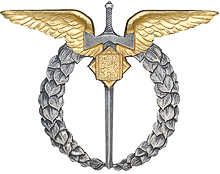




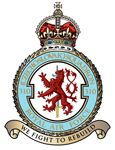
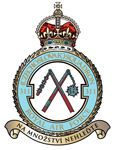
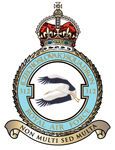
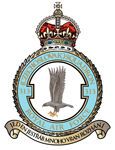


My Grandfather, left Port vendres on the same date. So presumably was on the same ship. Grandfather was Flt/sgt groundcrew in 311 sqn. Frantisek Sustr. I would love to hear from anyone who has a recollection about him as I didn’t really get to know him although he only passed away in 2001.
Reblogged this on Pickled Wings and commented:
A quite compelling read about the service career of one of “The Few”.